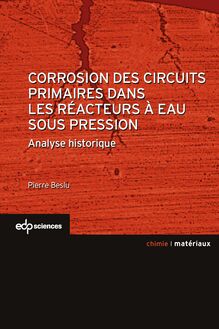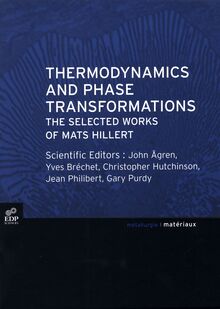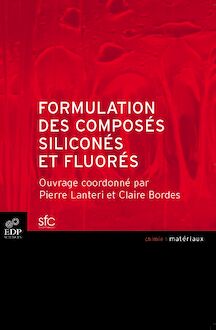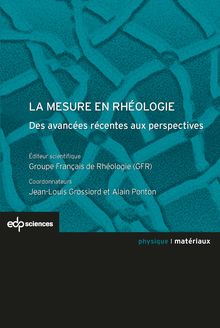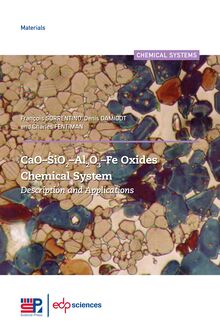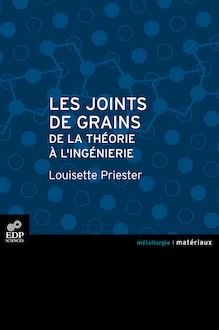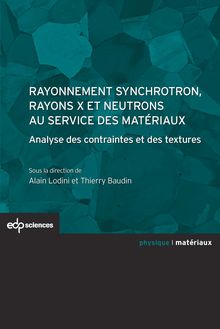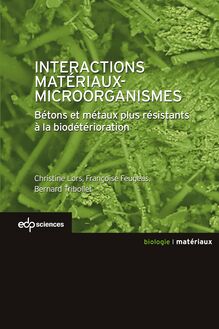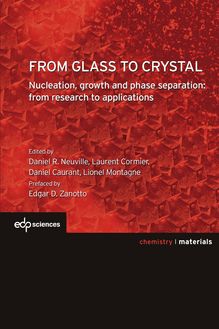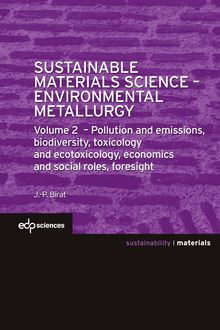-
 Univers
Univers
-
 Ebooks
Ebooks
-
 Livres audio
Livres audio
-
 Presse
Presse
-
 Podcasts
Podcasts
-
 BD
BD
-
 Documents
Documents
-
- Cours
- Révisions
- Ressources pédagogiques
- Sciences de l’éducation
- Manuels scolaires
- Langues
- Travaux de classe
- Annales de BEP
- Etudes supérieures
- Maternelle et primaire
- Fiches de lecture
- Orientation scolaire
- Méthodologie
- Corrigés de devoir
- Annales d’examens et concours
- Annales du bac
- Annales du brevet
- Rapports de stage
La lecture à portée de main
Découvre YouScribe en t'inscrivant gratuitement
Je m'inscrisCaO–SiO2–Al2O3–Fe Oxides Chemical System , livre ebook
Découvre YouScribe en t'inscrivant gratuitement
Je m'inscrisEn savoir plus
En savoir plus

Description
This book describes and comments on the results of research devoted to the studies of phase assemblages in the CaO-SiO2-Al2O3-Fe oxides chemical system, their stability and their evolution in our environment (temperature, pressure). Its aim is to be a research support, not only for researchers and development engineers but also more generally for others interested in materials sciences.
The book is divided in two parts; the first devoted to a description of ‘the system’ using phase diagrams. The second explores the properties and uses of some of the minerals that are in widespread industrial and commercial use.
Much of the work presented in this book is fully original and corresponds to the research undertaken by François Sorrentino from his time at the chemistry department of the University of Aberdeen during the early 1970’s, to recent years when he has resumed his interest in mineral research, particularly related to the synthesis of calcium silicates and calcium aluminates, and their industrial manufacture.
Preface . . . . . . . . . . . . . . . . . . . . . . . . . . . . . . . . . . . . . . . . . . . . . . . . . . . . . III
Part I - Descriptions
CHAPTER 1
One-Component Chemical Systems: CaO, SiO2, Al2O3 and Fe Oxides . . . . . . 3
1.1 CaO . . . . . . . . . . . . . . . . . . . . . . . . . . . . . . . . . . . . . . . . . . . . . . . . . . 3
1.1.1 Introduction . . . . . . . . . . . . . . . . . . . . . . . . . . . . . . . . . . . . . . . 3
1.1.2 Mineralogy, Structure and Stability . . . . . . . . . . . . . . . . . . . . . 3
1.1.3 Properties and Applications . . . . . . . . . . . . . . . . . . . . . . . . . . . 4
1.2 SiO2 . . . . . . . . . . . . . . . . . . . . . . . . . . . . . . . . . . . . . . . . . . . . . . . . . . 5
1.2.1 Introduction . . . . . . . . . . . . . . . . . . . . . . . . . . . . . . . . . . . . . . . 5
1.2.2 Mineralogy . . . . . . . . . . . . . . . . . . . . . . . . . . . . . . . . . . . . . . . . 5
1.2.3 Structure and Stability . . . . . . . . . . . . . . . . . . . . . . . . . . . . . . . 6
1.2.4 Properties and Applications . . . . . . . . . . . . . . . . . . . . . . . . . . . 6
1.3 Al2O3 . . . . . . . . . . . . . . . . . . . . . . . . . . . . . . . . . . . . . . . . . . . . . . . . . 7
1.3.1 Introduction . . . . . . . . . . . . . . . . . . . . . . . . . . . . . . . . . . . . . . . 7
1.3.2 Mineralogy . . . . . . . . . . . . . . . . . . . . . . . . . . . . . . . . . . . . . . . . 8
1.3.3 Structure and Stability . . . . . . . . . . . . . . . . . . . . . . . . . . . . . . . 8
1.3.4 Properties and Applications . . . . . . . . . . . . . . . . . . . . . . . . . . . 9
1.4 Fe Oxides . . . . . . . . . . . . . . . . . . . . . . . . . . . . . . . . . . . . . . . . . . . . . . 10
1.4.1 Introduction . . . . . . . . . . . . . . . . . . . . . . . . . . . . . . . . . . . . . . . 10
1.4.2 Mineralogy . . . . . . . . . . . . . . . . . . . . . . . . . . . . . . . . . . . . . . . . 11
1.4.3 Structure and Stability . . . . . . . . . . . . . . . . . . . . . . . . . . . . . . . 11
1.4.4 Synthesis . . . . . . . . . . . . . . . . . . . . . . . . . . . . . . . . . . . . . . . . . 14
1.4.5 Properties and Applications . . . . . . . . . . . . . . . . . . . . . . . . . . . 14
CHAPTER 2
Binary Chemical Systems . . . . . . . . . . . . . . . . . . . . . . . . . . . . . . . . . . . . . . . 17
2.1 CaO–SiO2 System . . . . . . . . . . . . . . . . . . . . . . . . . . . . . . . . . . . . . . . . 17
2.1.1 Introduction . . . . . . . . . . . . . . . . . . . . . . . . . . . . . . . . . . . . . . . 17
2.1.2 Mineralogy . . . . . . . . . . . . . . . . . . . . . . . . . . . . . . . . . . . . . . . . 17
2.1.3 Structure, Polymorphism and Solid Solution . . . . . . . . . . . . . . . 18
2.1.4 Stability and Phase Diagram of CaO–SiO2 System . . . . . . . . . . 25
2.1.5 Synthesis of Calcium Silicates . . . . . . . . . . . . . . . . . . . . . . . . . . 27
2.2 Al2O3–SiO2 System . . . . . . . . . . . . . . . . . . . . . . . . . . . . . . . . . . . . . . . 33
2.2.1 Introduction . . . . . . . . . . . . . . . . . . . . . . . . . . . . . . . . . . . . . . . 33
2.2.2 Mineralogy . . . . . . . . . . . . . . . . . . . . . . . . . . . . . . . . . . . . . . . . 33
2.2.3 Structure, Polymorphism and Solid Solutions . . . . . . . . . . . . . . 33
2.2.4 Stability and Phase Diagram . . . . . . . . . . . . . . . . . . . . . . . . . . 37
2.2.5 Synthesis of Alumino-Silicates . . . . . . . . . . . . . . . . . . . . . . . . . 41
2.3 Al2O3–Fe Oxides System . . . . . . . . . . . . . . . . . . . . . . . . . . . . . . . . . . . 44
2.3.1 Introduction . . . . . . . . . . . . . . . . . . . . . . . . . . . . . . . . . . . . . . . 44
2.3.2 Mineralogy . . . . . . . . . . . . . . . . . . . . . . . . . . . . . . . . . . . . . . . . 44
2.3.3 Structure, Polymorphism and Solid Solution . . . . . . . . . . . . . . . 44
2.3.4 Stability and Phase Diagram . . . . . . . . . . . . . . . . . . . . . . . . . . 45
2.3.5 Synthesis of Iron Aluminates . . . . . . . . . . . . . . . . . . . . . . . . . . 48
2.4 CaO–Al2O3 System . . . . . . . . . . . . . . . . . . . . . . . . . . . . . . . . . . . . . . . 48
2.4.1 Introduction . . . . . . . . . . . . . . . . . . . . . . . . . . . . . . . . . . . . . . . 48
2.4.2 Mineralogy . . . . . . . . . . . . . . . . . . . . . . . . . . . . . . . . . . . . . . . . 49
2.4.3 Structure, Polymorphism and Solid Solution . . . . . . . . . . . . . . . 49
2.4.4 Stability and Phase Diagram . . . . . . . . . . . . . . . . . . . . . . . . . . 55
2.4.5 Synthesis of Calcium Aluminates . . . . . . . . . . . . . . . . . . . . . . . 57
2.5 SiO2–Fe Oxides System . . . . . . . . . . . . . . . . . . . . . . . . . . . . . . . . . . . . 62
2.5.1 Introduction . . . . . . . . . . . . . . . . . . . . . . . . . . . . . . . . . . . . . . . 62
2.5.2 Mineralogy . . . . . . . . . . . . . . . . . . . . . . . . . . . . . . . . . . . . . . . . 62
2.5.3 Structure, Polymorphism and Solid Solution . . . . . . . . . . . . . . . 63
2.5.4 Liquid FeO–Fe2O3–SiO2 . . . . . . . . . . . . . . . . . . . . . . . . . . . . . . 66
2.5.5 Stability and Phase Diagram of the FeO–Fe2O3–SiO2 System . . . . 67
2.5.6 Synthesis of Iron Silicates . . . . . . . . . . . . . . . . . . . . . . . . . . . . . 71
2.6 CaO–Fe Oxides System. . . . . . . . . . . . . . . . . . . . . . . . . . . . . . . . . . . . 72
2.6.1 Introduction . . . . . . . . . . . . . . . . . . . . . . . . . . . . . . . . . . . . . . . 72
2.6.2 Mineralogy . . . . . . . . . . . . . . . . . . . . . . . . . . . . . . . . . . . . . . . . 72
2.6.3 Structure, Polymorphism and Solid-Solutions . . . . . . . . . . . . . . 72
2.6.4 Stability and Phase Diagram . . . . . . . . . . . . . . . . . . . . . . . . . . 75
2.6.5 Synthesis of Calcium Ferrite . . . . . . . . . . . . . . . . . . . . . . . . . . . 81
CHAPTER 3
Ternary Chemical Systems . . . . . . . . . . . . . . . . . . . . . . . . . . . . . . . . . . . . . . 83
3.1 General Introduction. . . . . . . . . . . . . . . . . . . . . . . . . . . . . . . . . . . . . . 83
3.2 CaO–Al2O3–SiO2 System . . . . . . . . . . . . . . . . . . . . . . . . . . . . . . . . . . 83
3.2.1 Ternary Constituents of the CaO–Al2O3–SiO2 System . . . . . . . 83
3.2.2 Mineralogy . . . . . . . . . . . . . . . . . . . . . . . . . . . . . . . . . . . . . . . . 84
3.2.3 Structure and Solid Solutions . . . . . . . . . . . . . . . . . . . . . . . . . . 85
3.2.4 Stability and Phases Diagrams (At One Atmosphere) . . . . . . . . 90
3.2.5 Compounds Obtained in Special Conditions . . . . . . . . . . . . . . . 97
3.2.6 Stability Relative to Temperature or Pressure and Both . . . . . . 98
VIII Contents
3.2.7 Thermodynamic Models . . . . . . . . . . . . . . . . . . . . . . . . . . . . . . 99
3.2.8 Synthesis of Calcium Silicoaluminate . . . . . . . . . . . . . . . . . . . . 101
3.3 Al2O3–SiO2–Fe Oxides . . . . . . . . . . . . . . . . . . . . . . . . . . . . . . . . . . . . 103
3.3.1 Introduction . . . . . . . . . . . . . . . . . . . . . . . . . . . . . . . . . . . . . . . 103
3.3.2 Mineralogy . . . . . . . . . . . . . . . . . . . . . . . . . . . . . . . . . . . . . . . . 103
3.3.3 Structure and Solid Solution. . . . . . . . . . . . . . . . . . . . . . . . . . . 103
3.3.4 Stability and Phase Diagram . . . . . . . . . . . . . . . . . . . . . . . . . . 104
3.3.5 Synthesis . . . . . . . . . . . . . . . . . . . . . . . . . . . . . . . . . . . . . . . . . 108
3.4 CaO–SiO2–Fe Oxides . . . . . . . . . . . . . . . . . . . . . . . . . . . . . . . . . . . . . 109
3.4.1 Introduction . . . . . . . . . . . . . . . . . . . . . . . . . . . . . . . . . . . . . . . 109
3.4.2 Mineralogy . . . . . . . . . . . . . . . . . . . . . . . . . . . . . . . . . . . . . . . . 109
3.4.3 Structure and Solid Solution. . . . . . . . . . . . . . . . . . . . . . . . . . . 110
3.4.4 Stability and Phase Diagrams in Air. . . . . . . . . . . . . . . . . . . . . 112
3.4.5 Stablity and Phase Diagram in the CaO–SiO2–FeO System . . . . 117
3.4.6 CaO–SiO2–FeOx System at Various Oxygen Pressures . . . . . . . 126
3.4.7 Model. . . . . . . . . . . . . . . . . . . . . . . . . . . . . . . . . . . . . . . . . . . . 131
3.4.8 Preparation and Synthesis . . . . . . . . . . . . . . . . . . . . . . . . . . . . 132
3.5 CaO–Al2O3–Fe Oxides . . . . . . . . . . . . . . . . . . . . . . . . . . . . . . . . . . . . 134
3.5.1 Introduction . . . . . . . . . . . . . . . . . . . . . . . . . . . . . . . . . . . . . . . 134
3.5.2 Mineralogy . . . . . . . . . . . . . . . . . . . . . . . . . . . . . . . . . . . . . . . . 134
3.5.3 Structure and Solid Solutions . . . . . . . . . . . . . . . . . . . . . . . . . . 135
3.5.4 Stability and Phase Diagrams . . . . . . . . . . . . . . . . . . . . . . . . . . 140
3.5.5 Liquidus in Reducing Atmosphere . . . . . . . . . . . . . . . . . . . . . . 143
3.5.6 Model of the System. . . . . . . . . . . . . . . . . . . . . . . . . . . . . . . . . 145
3.5.7 Formation and Synthesis . . . . . . . . . . . . . . . . . . . . . . . . . . . . . 145
CHAPTER 4
Quaternary Chemical Systems . . . . . . . . . . . . . . . . . . . . . . . . . . . . . . . . . . . 147
4.1 Introduction . . . . . . . . . . . . . . . . . . . . . . . . . . . . . . . . . . . . . . . . . . . . 147
4.1.1 Principle of Phase Equilibrium in a Quaternary System . . . . . . 147
4.2 CaO–SiO2–Al2O3–Fe2O3 System in Air . . . . . . . . . . . . . . . . . . . . . . . . 152
4.2.1 Quaternary Constituents of the CaO–SiO2–Al2O3–Fe
Oxides System . . . . . . . . . . . . . . . . . . . . . . . . . . . . . . . . . . . . . 152
4.2.2 Mineralogy . . . . . . . . . . . . . . . . . . . . . . . . . . . . . . . . . . . . . . . . 153
4.2.3 Mineralogy Structure Stability . . . . . . . . . . . . . . . . . . . . . . . . . 158
4.2.4 Formation and Synthesis . . . . . . . . . . . . . . . . . . . . . . . . . . . . . 173
4.3 CaO–Al2O3–SiO2–FeO System . . . . . . . . . . . . . . . . . . . . . . . . . . . . . . 173
4.3.1 Introduction . . . . . . . . . . . . . . . . . . . . . . . . . . . . . . . . . . . . . . . 173
4.3.2 Ternary Systems Located Within the CaO, Al2O3, SiO2,
FeO Tetrahedron . . . . . . . . . . . . . . . . . . . . . . . . . . . . . . . . . . . 173
4.3.3 Binary Systems . . . . . . . . . . . . . . . . . . . . . . . . . . . . . . . . . . . . 181
4.3.4 Crystallized Solids . . . . . . . . . . . . . . . . . . . . . . . . . . . . . . . . . . 182
4.3.5 Univariant Lines and Quaternary Invariant Points . . . . . . . . . . 182
4.3.6 2CaO·SiO2–CaO·SiO2–Gehlenite–FeO Quaternary System . . . . 183
Contents IX
CHAPTER 5
Quinary Chemical Systems . . . . . . . . . . . . . . . . . . . . . . . . . . . . . . . . . . . . . . 189
5.1 Introduction – Presentation of Quinary Data . . . . . . . . . . . . . . . . . . . 189
5.2 CaO–SiO2–Al2O3–FeO–Fe2O3 System . . . . . . . . . . . . . . . . . . . . . . . . . 189
5.2.1 Stability and Phase Diagrams . . . . . . . . . . . . . . . . . . . . . . . . . . 189
5.2.2 Conclusions . . . . . . . . . . . . . . . . . . . . . . . . . . . . . . . . . . . . . . . 192
References of Part I . . . . . . . . . . . . . . . . . . . . . . . . . . . . . . . . . . . . . . . . . . . 193
Part II - Applications
CHAPTER 6
Applications to Hydraulic Binders . . . . . . . . . . . . . . . . . . . . . . . . . . . . . . . . 211
6.1 General Introduction. . . . . . . . . . . . . . . . . . . . . . . . . . . . . . . . . . . . . . 211
6.2 Portland Cements (PC) . . . . . . . . . . . . . . . . . . . . . . . . . . . . . . . . . . . 212
6.2.1 Characteristics . . . . . . . . . . . . . . . . . . . . . . . . . . . . . . . . . . . . . 212
6.2.2 PC Applications . . . . . . . . . . . . . . . . . . . . . . . . . . . . . . . . . . . . 220
6.2.3 Conclusions – Prediction of the Properties . . . . . . . . . . . . . . . . 226
6.3 Calcium Aluminate Cements (CAC) . . . . . . . . . . . . . . . . . . . . . . . . . . 227
6.3.1 CAC Characteristics . . . . . . . . . . . . . . . . . . . . . . . . . . . . . . . . . 227
6.3.2 CAC Applications . . . . . . . . . . . . . . . . . . . . . . . . . . . . . . . . . . 234
6.4 Special Cements . . . . . . . . . . . . . . . . . . . . . . . . . . . . . . . . . . . . . . . . . 237
6.4.1 Fast-Setting Cements . . . . . . . . . . . . . . . . . . . . . . . . . . . . . . . . 237
6.4.2 Geopolymers . . . . . . . . . . . . . . . . . . . . . . . . . . . . . . . . . . . . . . 243
6.4.3 Oil Well Cements . . . . . . . . . . . . . . . . . . . . . . . . . . . . . . . . . . . 246
6.4.4 Expansive Cement . . . . . . . . . . . . . . . . . . . . . . . . . . . . . . . . . . 251
6.4.5 Dental Cements . . . . . . . . . . . . . . . . . . . . . . . . . . . . . . . . . . . . 253
6.4.6 Glass Cements . . . . . . . . . . . . . . . . . . . . . . . . . . . . . . . . . . . . . 259
CHAPTER 7
Application to Metal Refining . . . . . . . . . . . . . . . . . . . . . . . . . . . . . . . . . . . . 261
7.1 General Introduction. . . . . . . . . . . . . . . . . . . . . . . . . . . . . . . . . . . . . . 261
7.2 Slags from Iron and Steel Industry . . . . . . . . . . . . . . . . . . . . . . . . . . . 261
7.2.1 Blast Furnace Slags (BFS) . . . . . . . . . . . . . . . . . . . . . . . . . . . . 261
7.2.2 Converter Slags (Basic Oxygen Process or LD processing) . . . . 266
7.2.3 EAF Slags: High Carbon Steel . . . . . . . . . . . . . . . . . . . . . . . . . 269
7.2.4 Ladle Slag (Secondary Metallurgy) – Stainless – High Alloy
Steel Production. . . . . . . . . . . . . . . . . . . . . . . . . . . . . . . . . . . . 269
7.2.5 Refining Under Reducing Slag . . . . . . . . . . . . . . . . . . . . . . . . . 270
7.3 Formation and Properties of Liquid Slags . . . . . . . . . . . . . . . . . . . . . . 271
7.4 Slags from Non Ferrous Industry . . . . . . . . . . . . . . . . . . . . . . . . . . . . . 272
7.4.1 Copper Slag . . . . . . . . . . . . . . . . . . . . . . . . . . . . . . . . . . . . . . . 272
7.4.2 Silico-Manganese Slag. . . . . . . . . . . . . . . . . . . . . . . . . . . . . . . . 272
X Contents
CHAPTER 8
Application to Refractory Materials . . . . . . . . . . . . . . . . . . . . . . . . . . . . . . . 275
8.1 Introduction . . . . . . . . . . . . . . . . . . . . . . . . . . . . . . . . . . . . . . . . . . . . 275
8.2 Raw Materials Based on Al2O3 and SiO2. . . . . . . . . . . . . . . . . . . . . . . 276
8.2.1 Natural Raw Materials . . . . . . . . . . . . . . . . . . . . . . . . . . . . . . . 276
8.2.2 Synthetic Raw Material . . . . . . . . . . . . . . . . . . . . . . . . . . . . . . 277
8.3 Applying Refractory Materials . . . . . . . . . . . . . . . . . . . . . . . . . . . . . . 278
8.3.1 Brick and Monolithic Refractories . . . . . . . . . . . . . . . . . . . . . . . 278
8.3.2 Refractory Cement and Mortar . . . . . . . . . . . . . . . . . . . . . . . . 281
8.4 Refractories Consuming Industry . . . . . . . . . . . . . . . . . . . . . . . . . . . . 286
8.4.1 Iron and Steel Industry . . . . . . . . . . . . . . . . . . . . . . . . . . . . . . 286
8.4.2 Non-Ferrous Metal Industry . . . . . . . . . . . . . . . . . . . . . . . . . . . 287
8.4.3 Cement Industry . . . . . . . . . . . . . . . . . . . . . . . . . . . . . . . . . . . 287
8.4.4 Whiteware, Traditional Ceramic Industry . . . . . . . . . . . . . . . . . 288
8.4.5 High-Tech Ceramic Industry . . . . . . . . . . . . . . . . . . . . . . . . . . . 288
8.4.6 Glass Industry . . . . . . . . . . . . . . . . . . . . . . . . . . . . . . . . . . . . . 288
CHAPTER 9
Application of the Glassy Products . . . . . . . . . . . . . . . . . . . . . . . . . . . . . . . . 291
9.1 Introduction . . . . . . . . . . . . . . . . . . . . . . . . . . . . . . . . . . . . . . . . . . . . 291
9.2 Structure of Glass . . . . . . . . . . . . . . . . . . . . . . . . . . . . . . . . . . . . . . . . 292
9.3 Classification of Glass Products Containing CaO, Al2O3, SiO2
and Fe Oxides . . . . . . . . . . . . . . . . . . . . . . . . . . . . . . . . . . . . . . . . . . . 293
9.4 Products, Chemistry and Process . . . . . . . . . . . . . . . . . . . . . . . . . . . . 294
9.4.1 High Silica Glass – Vycor Glass . . . . . . . . . . . . . . . . . . . . . . . . 294
9.4.2 Soda-Lime Glass. . . . . . . . . . . . . . . . . . . . . . . . . . . . . . . . . . . . 295
9.4.3 Sodium Borosilicate – Glass Fibres . . . . . . . . . . . . . . . . . . . . . . 295
9.4.4 Aluminosilicate Glass . . . . . . . . . . . . . . . . . . . . . . . . . . . . . . . . 297
9.4.5 Special Applications . . . . . . . . . . . . . . . . . . . . . . . . . . . . . . . . . 299
CHAPTER 10
Application of Ceramic Products . . . . . . . . . . . . . . . . . . . . . . . . . . . . . . . . . 303
10.1 Introduction to Ceramics . . . . . . . . . . . . . . . . . . . . . . . . . . . . . . . . . 303
10.2 Structure of Ceramics . . . . . . . . . . . . . . . . . . . . . . . . . . . . . . . . . . . . 303
10.2.1 Processing of Manufacture . . . . . . . . . . . . . . . . . . . . . . . . . . 303
10.2.2 Shaping . . . . . . . . . . . . . . . . . . . . . . . . . . . . . . . . . . . . . . . . 304
10.2.3 Physico-Chemical Changes During Firing . . . . . . . . . . . . . . . 305
10.3 Classification of Ceramic Products Containing CaO, SiO2,
Al2O3 and Fe Oxides . . . . . . . . . . . . . . . . . . . . . . . . . . . . . . . . . . . . . 305
10.3.1 Introduction . . . . . . . . . . . . . . . . . . . . . . . . . . . . . . . . . . . . . 305
10.3.2 Traditional Ceramics . . . . . . . . . . . . . . . . . . . . . . . . . . . . . . 305
10.3.3 Ceramics in the Construction Sector Ceramics . . . . . . . . . . . 312
10.3.4 High Technology Ceramics . . . . . . . . . . . . . . . . . . . . . . . . . . 313
Contents XI
CHAPTER 11
Application as Fillers . . . . . . . . . . . . . . . . . . . . . . . . . . . . . . . . . . . . . . . . . . 315
11.1 General Introduction . . . . . . . . . . . . . . . . . . . . . . . . . . . . . . . . . . . . . 315
11.2 Mono-Component . . . . . . . . . . . . . . . . . . . . . . . . . . . . . . . . . . . . . . . 317
11.2.1 Calcium Oxide . . . . . . . . . . . . . . . . . . . . . . . . . . . . . . . . . . . 317
11.2.2 SiO2 . . . . . . . . . . . . . . . . . . . . . . . . . . . . . . . . . . . . . . . . . . . 318
11.2.3 Alumina . . . . . . . . . . . . . . . . . . . . . . . . . . . . . . . . . . . . . . . . 319
11.2.4 Fe oxides . . . . . . . . . . . . . . . . . . . . . . . . . . . . . . . . . . . . . . . 320
11.3 Multi-Components By-Products from Industrial Process . . . . . . . . . . 321
11.3.1 Slags . . . . . . . . . . . . . . . . . . . . . . . . . . . . . . . . . . . . . . . . . . 321
11.3.2 Fly Ashes . . . . . . . . . . . . . . . . . . . . . . . . . . . . . . . . . . . . . . . 324
11.3.3 Red Mud (KUR 1997) . . . . . . . . . . . . . . . . . . . . . . . . . . . . . 326
11.3.4 Cement Kiln Dust (CKD) . . . . . . . . . . . . . . . . . . . . . . . . . . 327
11.4 Multi-Components from Natural Origin . . . . . . . . . . . . . . . . . . . . . . 328
11.4.1 Natural Pozzolans . . . . . . . . . . . . . . . . . . . . . . . . . . . . . . . . 328
11.4.2 Metakaolin . . . . . . . . . . . . . . . . . . . . . . . . . . . . . . . . . . . . . . 330
11.4.3 Rice Husk Ashes (RHA) . . . . . . . . . . . . . . . . . . . . . . . . . . . . 331
11.4.4 Wollastonite . . . . . . . . . . . . . . . . . . . . . . . . . . . . . . . . . . . . . 332
References of Part II. . . . . . . . . . . . . . . . . . . . . . . . . . . . . . . . . . . . . . . . . . . 33
Sujets
Informations
| Publié par | EDP Sciences |
| Date de parution | 08 février 2021 |
| Nombre de lectures | 1 |
| EAN13 | 9782759825363 |
| Langue | English |
| Poids de l'ouvrage | 19 Mo |
Informations légales : prix de location à la page 1,5300€. Cette information est donnée uniquement à titre indicatif conformément à la législation en vigueur.
Extrait
-
 Univers
Univers
-
 Ebooks
Ebooks
-
 Livres audio
Livres audio
-
 Presse
Presse
-
 Podcasts
Podcasts
-
 BD
BD
-
 Documents
Documents
-
Jeunesse
-
Littérature
-
Ressources professionnelles
-
Santé et bien-être
-
Savoirs
-
Education
-
Loisirs et hobbies
-
Art, musique et cinéma
-
Actualité et débat de société
-
Jeunesse
-
Littérature
-
Ressources professionnelles
-
Santé et bien-être
-
Savoirs
-
Education
-
Loisirs et hobbies
-
Art, musique et cinéma
-
Actualité et débat de société
-
Actualités
-
Lifestyle
-
Presse jeunesse
-
Presse professionnelle
-
Pratique
-
Presse sportive
-
Presse internationale
-
Culture & Médias
-
Action et Aventures
-
Science-fiction et Fantasy
-
Société
-
Jeunesse
-
Littérature
-
Ressources professionnelles
-
Santé et bien-être
-
Savoirs
-
Education
-
Loisirs et hobbies
-
Art, musique et cinéma
-
Actualité et débat de société
- Cours
- Révisions
- Ressources pédagogiques
- Sciences de l’éducation
- Manuels scolaires
- Langues
- Travaux de classe
- Annales de BEP
- Etudes supérieures
- Maternelle et primaire
- Fiches de lecture
- Orientation scolaire
- Méthodologie
- Corrigés de devoir
- Annales d’examens et concours
- Annales du bac
- Annales du brevet
- Rapports de stage
